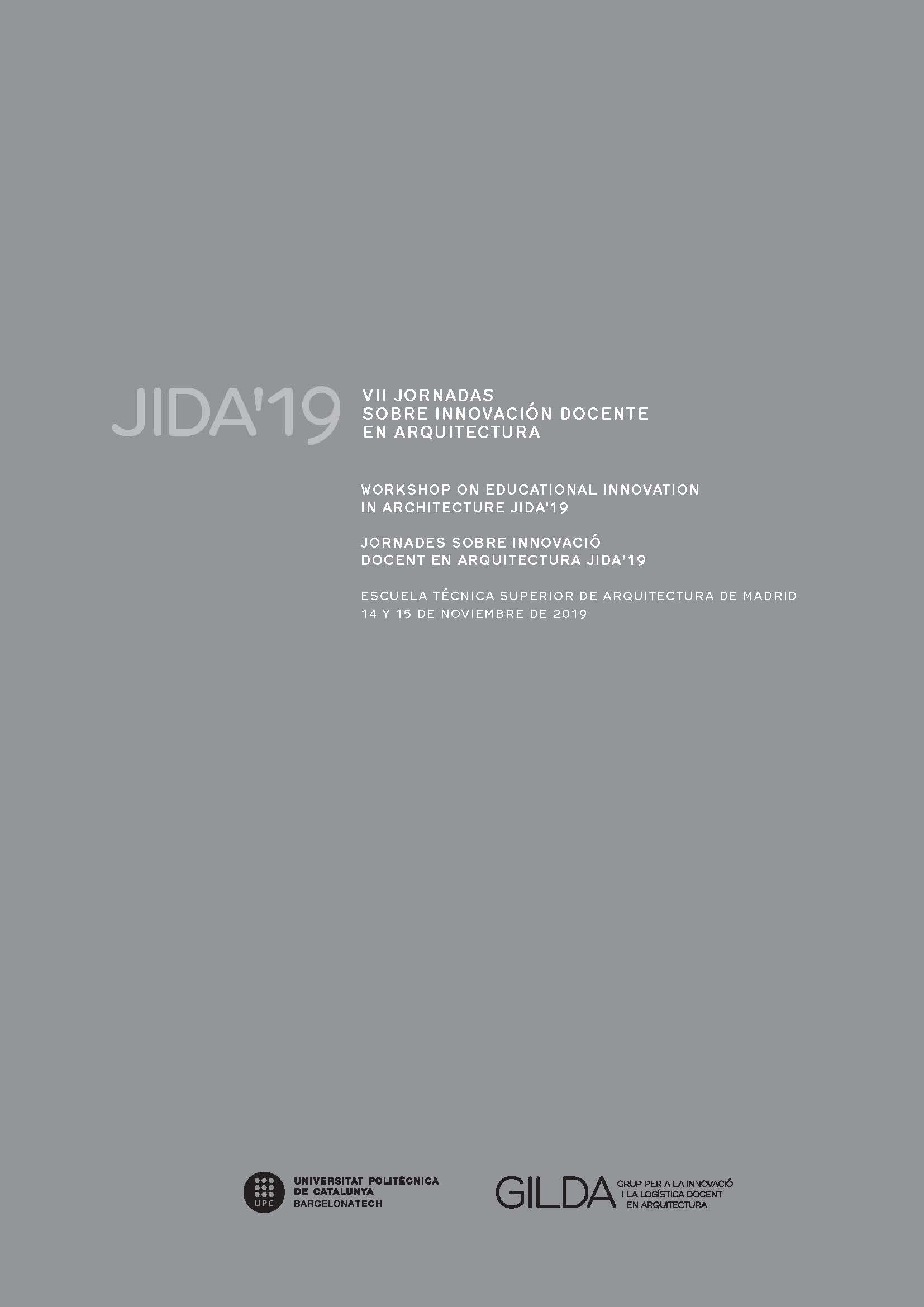City Limits and the Architect's Role
DOI:
https://doi.org/10.5821/jida.2019.8307Abstract
This paper provides an approach to the complexity of city limits and their potential to foster the debate on the architect’s role in the design and management of contemporary cities. Specifically, it examines the process and outcomes of an integrated course of Architectural and Urban Design that pursues service-learning, enriched through the opportunity of collaboration with the developer of a new urban area in the limits of Madrid and the neighborhood associations of a surrounding community. Students benefit from different learning activities covered by the agreement between the university and the developing company, including talks and workshops with cross-functional experts. The interaction with participatory urbanism enhances the students’ skills to understand the difficulty of meeting business requirements and citizen needs in planning. Impact is high on the students’ learning by doing, the university knowledge transfer—results are published—and the corporate social responsibility.
References
BERTAUD, A. (2018). Order without Design: How Markets Shape Cities. Cambridge, MA: The MIT Press.
BRIGGS, M. S. (1974). The Architect in History. New York: Da Capo Press.
CLAVAN, B. et al. (2015). Design for a New Age: Teaching the Social Art of Architecture. Berkeley: University of California.
COLOMINA, B., CHOI, E., GONZALEZ GALAN, I. y MEISTER, A. M. (2012). “Radical Pedagogies: Experiments in Architectural Education†en The Architectural Review, 232, 1378, 78-82.
DEWEY, J. (1938). Experience and Education. New York: Collier PUIG, J., MARTÃN, X., RUBIO, L. (2017). “¿Cómo evaluar proyectos de aprendizaje servicio?†en Voces de la Educación, 2, 2, 122-132.
DÃAZ CAMACHO, M.A. et al. (2017). GeoUrbanismos: Explorando la ciudad a través de la Universidad. Madrid: Cityfollowers, Universidad Camilo José Cela.
DÃAZ CAMACHO, M.A. et al. (2018). GeoUrbanismos II: CartografÃa de los Afectos. Madrid: Cityfollowers, Universidad Camilo José Cela.
HARVEY, D. (1973). Social Justice and the City. London: E. Arnold.
HERNÃNDEZ AJA, A. (1997). La ciudad de los ciudadanos. Madrid: Ministerio de Fomento.
MOYA, L. (1997). “La realidad de la vivienda obrera. Poblados de absorción, mÃnimos y dirigidos, y unidades vecinales de absorción (U.V.A.s)†en Espiga Romero, J. R. La vivienda experimental: concurso de viviendas experimentales de 1956. Madrid: Fundación Cultural COAM.
NAYLOR, G. (1990). The Arts and Crafts Movement: A Study of Its Sources, Ideals, and Influence on Design Theory. London: Trefoil.
PAISAJE TRANSVERSAL (2015). PIER Virgen de Begoña. <https://issuu.com/paisajetransversal/docs/pier_vdb> [Consulta: 6 de julio de 2019]
PEVSNER, N. (1982). Academias de arte: Pasado y presente. Madrid: Cátedra.
SENNETT, R. (2007). “La ciudad abierta†en Pensamiento Urbano, 11, 26-32.
SENNETT, R. (2012). “The Architecture of Cooperation†Youtube. <https://www.youtube.com/watch?v=tcXE4NEgLn8> [Consulta: 24 de mayo de 2019]
SENNETT, R. (2016). “The City as an Open Systemâ€. Re:publica <https://doi.org/10.5446/20684> [Consulta: 6 de julio de 2019]
SOJA, E. (2000). Postmetropolis: Critical Studies of Cities and Regions. Malden: Blackwell.
WHITFORD, F. (1992). The Bauhaus: Masters and Students by Themselves. London: Conran Octopus.
WICK, R. (1998). La pedagogÃa de la Bauhaus. Madrid: Alianza Editorial.






















